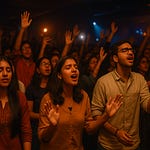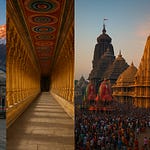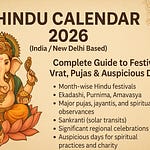1. 🕉️ Origin & Founding
Mythology & Spiritual Beginnings:
Bhimashankar is one of the 12 Jyotirlingas in India, signifying the most revered abodes of Lord Shiva. Its origin is steeped in divine mythology:
A demon named Tripurasura, born from Lord Shiva's blessing, became arrogant and threatened peace across the three worlds.
The gods pleaded with Shiva to end Tripurasura's reign. Shiva appeared as Bhimashankar, waged a celestial battle, and vanquished the demon.
From the divine perspiration of Lord Shiva emerged the Bhima River, and the place where he rested became Bhimashankar.
The Jyotirlinga manifested here naturally (Swayambhu).
It is said the legendary sage Kaushika meditated here, and the temple also has connections with the Kartikeya (Murugan) lore.
2. 📜 Historical Timeline
Ancient to Modern Era:
Pre-13th century: Local worship likely existed as a form of nature worship around the self-manifested linga.
13th century: Formal temple structure believed to have been built during the Yadava rule.
18th century: The temple was renovated and expanded by Nana Phadnavis, a Maratha statesman and minister of the Peshwa dynasty.
1984: Bhimashankar Wildlife Sanctuary declared, protecting the ecosystem around the temple.
Mentions in Scriptures:
Found in Shiva Purana, described as one of the holiest Jyotirlingas.
Referenced in Skanda Purana and Koti Rudra Samhita.
3. 🏛️ Architecture & Design
Architectural Style:
Built in Nagara style with Hemadpanthi influence (medieval Maharashtrian architecture).
Uses locally sourced black basalt rock.
Key Features:
Garbhagriha (sanctum) with the Swayambhu Jyotirlinga.
Mandap (pillared hall) for gatherings and rituals.
A Sabha Mandap added during Maratha period.
Sculpted images of deities like Ganesha, Nandi, Kartikeya, and several divine motifs.
Carvings of flora-fauna and inscriptions on walls.
4. 🔱 Spiritual Significance
Why It's Sacred:
It's a Jyotirlinga, where Lord Shiva is believed to have appeared in radiant light.
Place of Shiva’s victory over evil, granting protection and blessings.
The Bhima River origin links it to a source of life and sanctity.
Puranic Connections:
Shiva Purana emphasizes that darshan here cleanses karma and grants liberation (moksha).
Belief that this is where Shiva resides in his most peaceful form.
5. 🙏 Puja & Rituals
Daily Worship:
Rudrabhishek with milk, water, ghee, honey, sugar, curd.
Devotees offer bel leaves, flowers, sandalwood, and bhasma.
Daily pujas performed by Shaivite Brahmins.
Special Sevas:
Laghu Rudra, Maha Rudra Abhishek, Ekadasha Rudram on request.
Pradosh Pujas and Shravan Mondays are highly auspicious.
6. 🎉 Festivals Celebrated
Major Celebrations:
Mahashivratri: Grandest festival with overnight japa, bhajans, and thousands of pilgrims.
Shravan Maas (July–August): Monday pujas and rituals, highest footfall.
Kartik Poornima, Nag Panchami, and Diwali are also significant.
Regional Festivals:
Tripurari Pournima celebrated to commemorate Shiva’s slaying of Tripurasura.
7. 🎶 Bhajans & Cultural Aspects
Devotional Practices:
Traditional bhajans, kirtans, and shiv-tandav stotras sung by local groups.
Instruments like damaru, dholak, harmonium, and nagara used in temples.
On special days, devotional dance-drama events are held in the mandap.
8. 🕯️ Aarti Timings & Daily Schedule
Kakad Aarti (morning): 4:30 AM
Midday Aarti: 12:00 PM
Evening Aarti (Sandhya): 7:30 PM
Shayan Aarti (night): 9:30 PM
Darshan Timings:
Temple opens: 4:30 AM
Closes: 9:30 PM
Best time for peaceful darshan: early morning before 8:00 AM
9. 📿 Special Satsangs, Functions & Events
Spiritual discourses (pravachan) are held during Shravan and Shivratri.
Annual Bhimashankar Yatra attracts thousands of foot pilgrims from across Maharashtra.
Involvement of local Shaivite sampradayas, saints, and akharas during festivals.
10. 🔮 Special Pujas & Mystical Beliefs
Unique Practices:
The Jyotirlinga is believed to radiate energy – some say they feel their "third eye" chakra activated here.
Gupt Bhimashankar, a hidden shrine deep in the jungle, is believed to be where Shiva meditated after the battle.
Local Beliefs:
Pilgrims say wishes made here with devotion are always fulfilled.
Many report personal healing, peace, and life transformation after visiting.
11. 💬 Devotee Experience
Spiritual Testimonials:
Devotees describe feeling divine vibrations and spiritual elevation.
During peak days, the temple handles large crowds efficiently.
On Special Days:
The entire temple complex becomes alive with chants, bells, incense smoke, and spiritual energy.
12. 🧭 Travel & Visitor Information
Location:
Bhimashankar, Khed Taluka, Pune District, Maharashtra
Elevation: ~3,250 feet in the Western Ghats
How to Reach:
By Air: Nearest Airport is Pune International Airport (~110 km)
By Rail: Pune Junction is the nearest railway station.
By Road: Accessible via private car, buses from Pune or Mumbai.
Trekking Routes:
From Khandas Village: via Shidi Ghat (steep) or Ganesh Ghat (easier, scenic)
Treks pass through forest trails and waterfalls.
Accommodation:
MTDC Resort, local lodges, and dharamshalas available
Book in advance during festivals and weekends
Entry Rules:
No entry fee
Modest clothing required; remove footwear before entering temple
Photography is restricted inside sanctum
13. 📲 Other Details
Donations:
Donations accepted via temple counters and official trust
Donation receipts and prasadam available
Online Presence:
Official Website (varies seasonally)
Some third-party platforms offer live darshan feeds, e-puja booking, and tour packages
Local Shops:
Offer rudraksha beads, prasadam (pedha/sugar), and puja items
Mahadev murals, Shiva statues, and forest herbs also sold
Bhimashankar Mahadev Mandir is not just a spiritual destination—it is a soulful journey into India's divine mythology, architectural beauty, and ecological richness. For seekers of moksha, lovers of nature, or history buffs, this temple offers a wholesome, transformative experience rooted in devotion, mythology, and cosmic energy.










